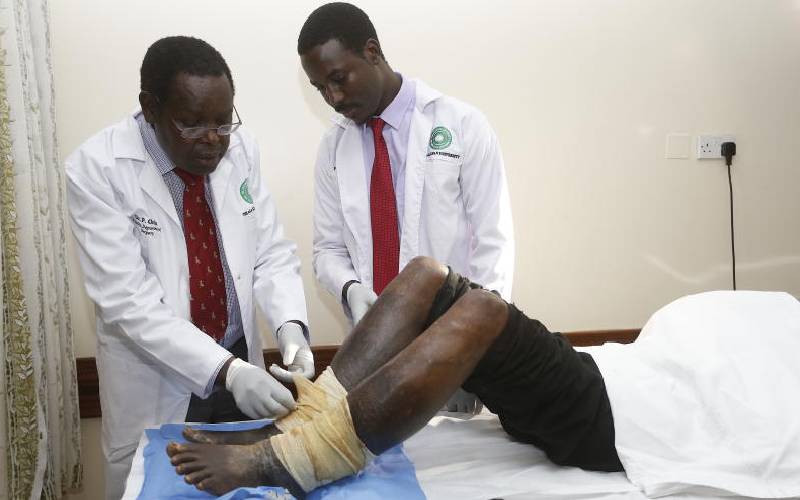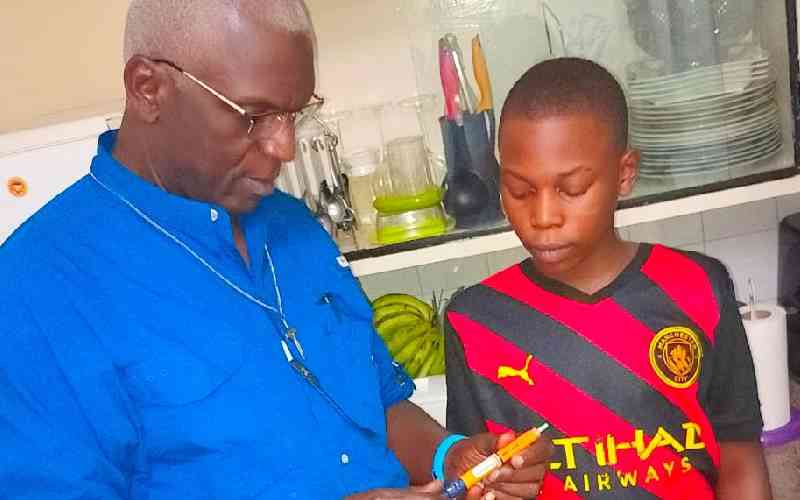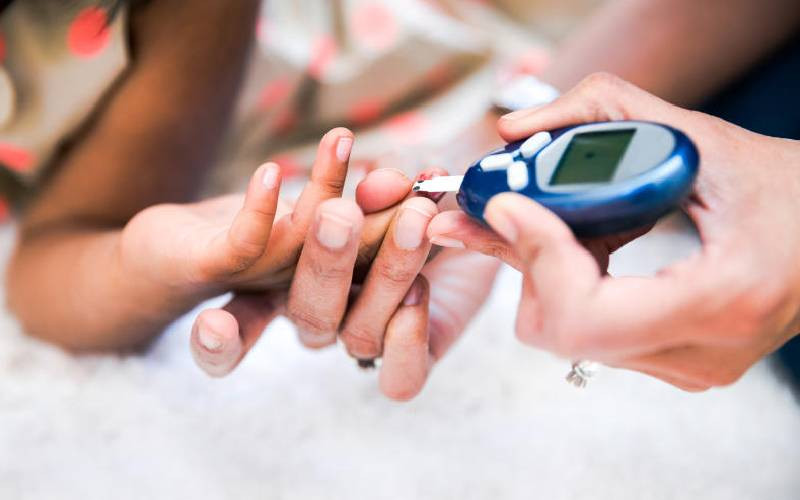
Wounds are a fact of life. Whether you are slicing onions and end up nicking your finger, scraping your knee on the street or getting a blister from breaking in new shoes, getting hurt is inevitable. Even the most careful among us, from chefs in the kitchen to kids on playgrounds, gym enthusiasts or athletes on the pitch, can find ourselves nursing an unexpected injury.
But a small cut can sometimes become something more serious, especially if it does not heal well or begins to show signs of infection. While some people recover quickly, others may struggle with persistent pain or delayed healing depending on their overall health, immune response and how the wound is managed.
Kennedy Omondi, an Advanced Wound Care Specialist says that wound care is far more advanced than most people realise, and ignoring proper treatment could spell trouble.
“Wounds need more than just a plaster and patience,” Omondi says. “They require professional assessment for effective treatment, whether it is a surgical, traumatic or chronic wound.”
For effective wound management there is the TIMERS framework developed by the European Wound Management Association.
This refers to Tissue management, Infection control, Moisture balance, Edge of wound advancement and Repair or regeneration of skin.
According to Omondi, every wound must be checked not just for visible damage but also for underlying health issues that may slow healing, such as diabetes or vascular conditions.
- KNH transforms lives through specialised surgical camp
- Why political goodwill is the key to elevating surgical and anaesthesia capacity
Keep Reading
“People with diabetes or poor circulation need extra care. Their wounds can become chronic because blood doesn’t reach the tissues efficiently or because high sugar levels interfere with immune function,” he explains.
Not all wounds heal the same. Some take longer and others get infected along the way. The World Health Organisation (WHO) notes that poor wound care contributes to prolonged hospital stays, disability and even mortality, especially in low and middle-income countries where wound care services are often underdeveloped.
Omondi explains that infection can be local or systemic. “If you notice pus, unusual redness, foul smell or the wound just is not healing, you are probably dealing with a local infection,” he says. “But if you have a fever, swelling in nearby areas or feel extremely tired, it may be spreading and that needs urgent attention.”
Signs that a wound is not healing properly include increasing pain, swelling, tissue discolouration and delayed closure.
For such cases, Omondi recommends immediate evaluation and tailored interventions, which may include negative pressure wound therapy, oxygen-based treatments or even medical maggot therapy. Yes, maggots, tiny but mighty heroes in modern medicine. Healing is not only about what you apply externally. It is also about what you put into your body.
“A high-protein diet, good hydration and sufficient vitamins are essential for tissue repair and immune support,” Omondi advises. He adds that obesity can hinder healing because fatty tissues have poor blood supply, slowing the delivery of nutrients and oxygen to the wound.
A 2019 study published in the International Wound Journal found that patients with poor nutritional status experienced delayed wound healing compared to those with balanced diets.
Pain is experienced differently from person to person. “Pain perception differs. It depends on the nervous system, the type of wound and even one’s psychological state,” says Omondi. Some people endure dressing changes with a stoic face. Others feel intense pain from a mild injury.
Pain is not just a nuisance. It can indicate underlying complications, like nerve damage or infection. Omondi notes that proper pain management should be individualised, with practitioners prescribing the right painkillers or even suggesting massage or guided physical therapy to reduce discomfort.
Stress can interfere with the healing process. According to the American Psychological Association, stress hormones such as cortisol can constrict blood vessels and suppress the immune system, making healing slower. “Mental health affects follow-up consistency, medication use, and the body’s response to treatment,” Omondi adds.
Wound care has come a long way from gauze and antiseptic. With the advancements in technology, patients today have access to specialist dressings, tissue regeneration therapies, growth factor injections and much more. Omondi emphasises that choosing the right treatment begins with a full wound assessment followed by regular monitoring.
Preventing scars is also part of modern wound care. “Scar prevention starts even before the wound closes. Specialised dressings support normal tissue regeneration. After healing, medical-grade scar care products can reduce visibility,” he says.
Many people delay seeking medical help for wounds, thinking they will heal on their own. But this is not always the case. Omondi warns that neuropathy, a common issue in diabetics, can mean wounds go unnoticed until it is too late. “Extreme pain or sudden numbness should never be ignored. These may signal more serious complications needing urgent care.”
Wound care is not just about patching up. It is about preventing infection, managing pain, supporting the body’s healing process and knowing when to seek help.
 The Standard Group Plc is a multi-media organization with investments in media
platforms spanning newspaper print
operations, television, radio broadcasting, digital and online services. The
Standard Group is recognized as a
leading multi-media house in Kenya with a key influence in matters of national
and international interest.
The Standard Group Plc is a multi-media organization with investments in media
platforms spanning newspaper print
operations, television, radio broadcasting, digital and online services. The
Standard Group is recognized as a
leading multi-media house in Kenya with a key influence in matters of national
and international interest.











